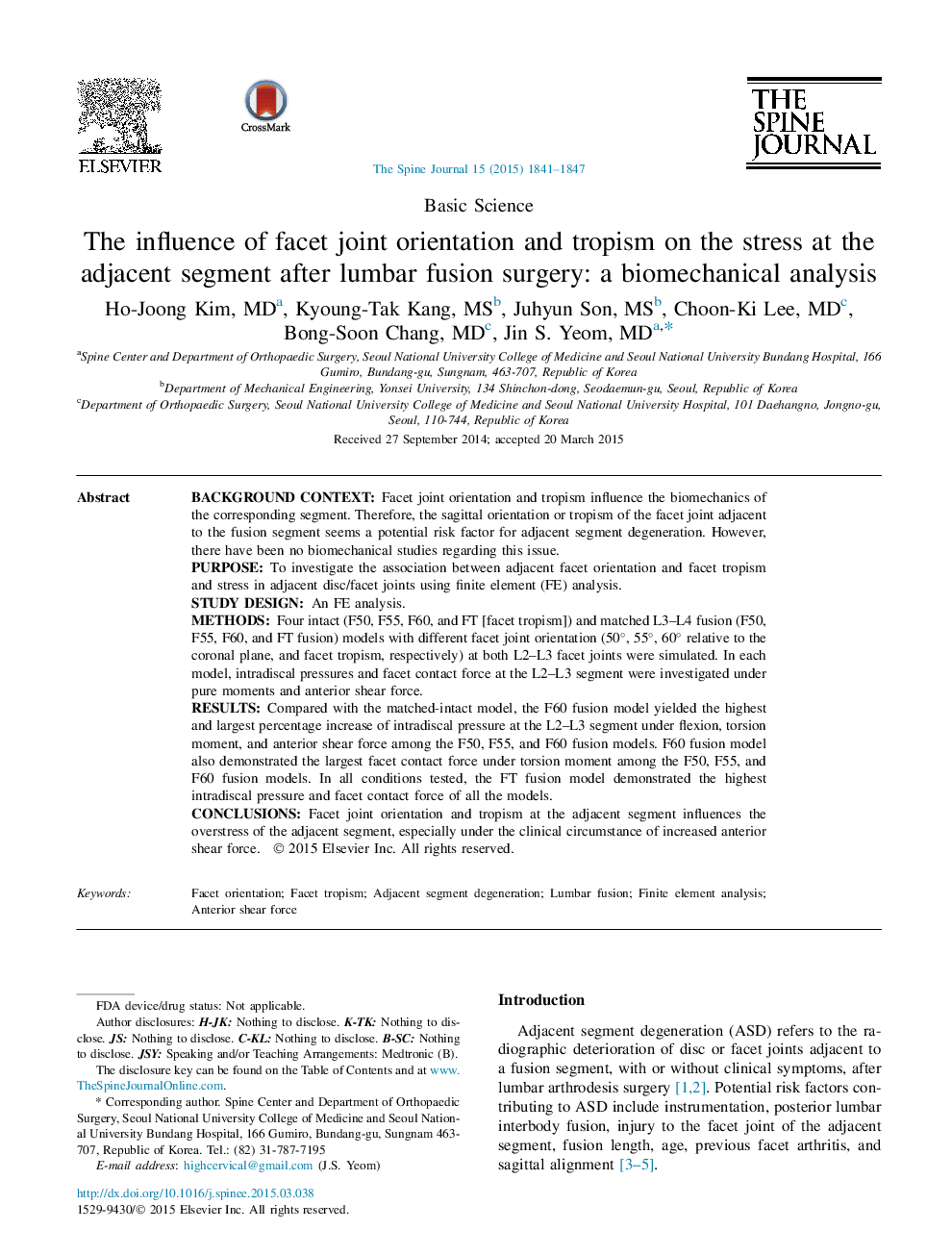| کد مقاله | کد نشریه | سال انتشار | مقاله انگلیسی | نسخه تمام متن |
|---|---|---|---|---|
| 6212471 | 1268580 | 2015 | 7 صفحه PDF | دانلود رایگان |
Background contextFacet joint orientation and tropism influence the biomechanics of the corresponding segment. Therefore, the sagittal orientation or tropism of the facet joint adjacent to the fusion segment seems a potential risk factor for adjacent segment degeneration. However, there have been no biomechanical studies regarding this issue.PurposeTo investigate the association between adjacent facet orientation and facet tropism and stress in adjacent disc/facet joints using finite element (FE) analysis.Study designAn FE analysis.MethodsFour intact (F50, F55, F60, and FT [facet tropism]) and matched L3-L4 fusion (F50, F55, F60, and FT fusion) models with different facet joint orientation (50°, 55°, 60° relative to the coronal plane, and facet tropism, respectively) at both L2-L3 facet joints were simulated. In each model, intradiscal pressures and facet contact force at the L2-L3 segment were investigated under pure moments and anterior shear force.ResultsCompared with the matched-intact model, the F60 fusion model yielded the highest and largest percentage increase of intradiscal pressure at the L2-L3 segment under flexion, torsion moment, and anterior shear force among the F50, F55, and F60 fusion models. F60 fusion model also demonstrated the largest facet contact force under torsion moment among the F50, F55, and F60 fusion models. In all conditions tested, the FT fusion model demonstrated the highest intradiscal pressure and facet contact force of all the models.ConclusionsFacet joint orientation and tropism at the adjacent segment influences the overstress of the adjacent segment, especially under the clinical circumstance of increased anterior shear force.
Journal: The Spine Journal - Volume 15, Issue 8, 1 August 2015, Pages 1841-1847
